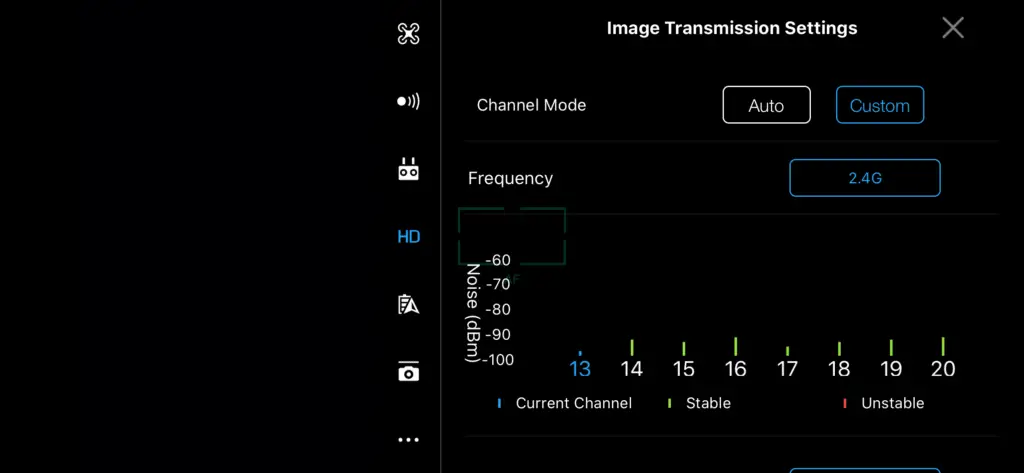There are a number of things that can cause electromagnetic interference when flying your drone, including:
- Cell phone towers
- High Voltage Power Lines
- Areas with high concentrations of wi-fi networks
- Buildings and large metal structures
Importantly, you should understand how to fly when these obstacles are present, as well as other precautions you can take to minimize the effects of interference when flying your drone.
A Short Primer on Electromagnetic Waves
This is by no means a comprehensive look at electromagnetic (EM) waves, but it seems like a great place to start for understanding interference caused by various types of EM waves. First, EM waves are used for all kinds of things. Everything from microwaves, to cell phones, wireless routers, TV stations, garage door openers, etc. Each of these devices uses specific frequencies to work in the way that it is supposed to work. And while many of these devices could conceivably work using any number of frequencies, the use of EM frequencies is regulated. In the US, the FCC regulates the use of EM waves and has set aside a specific range of frequencies, which is called the ISM band of frequencies. This band of frequencies (2.4 GHz) is unlicensed and allows gadget makers of all kinds to create devices that operate within this band. Wired magazine describes the ISM band this way:
If routers and cordless phones and whatever else are relegated to a small band 2.4 GHz, then their radio waves won’t interfere with, say, cellphones operating at 1.9 GHz, or AM radio, which broadcasts between 535 kHz and 1.7 MHz. The ISM is, in effect, a ghetto for unlicensed wireless transmission.
The whole article is actually a fascinating read (Link to Wired article) if you’re looking for a deep dive on radio frequencies and consumer products, specifically why they operate in this 2.4 GHz band.
Do Cell Phone Towers Interfere with Drones?
As stated above, cell phone towers can interfere with the flight of your drone. But like we also just looked at, devices like cell phones operate on a band of frequencies (1.9 GHz) that are different than drones. And while this could be the end of the conversation, it really isn’t. Again, without getting too deep into the weeds, interference can sometimes occur between wireless products when the frequencies used by each of the items in unexpected ways.
One way this can occur is through intermodulation. This video below was actually super helpful in understanding this concept, even if he’s speaking in terms of using wireless microphones. The concept remains the same for any set of radio frequencies.
And while you don’t really need to understand the finer points of intermodulation, it’s important to understand that when you are using a drone that receives and transmits information on one set of frequencies (i.e. 2.4 GHz or 5.8 GHz), the cell tower may be emitting any number of other frequencies at a very high power that could interfere with the control and/or video transmission on your drone. Unlike the examples in the video above, where the microphone company has done the math to ensure there is no intermodulation between frequencies when using a number of their microphones on specific settings, your drone has not been coordinated in the same way when you fly super close to a cell tower and this can cause problems.
While you may fly tower inspections on a bunch of cell towers, it only takes one frequency at high power from the cell tower to cause your drone to lose control inputs from your controller or even video signal. And while most of the time this may only cause a brief interference, it could also result in a flyaway or a crash. DJI even admits as much in an article on their website (link to DJI article) about the use of powerful zoom camera for cell tower inspections. It says:
Inspecting a tower by drone requires getting up close to view it through its integrated camera, subjecting it to electromagnetic interference that can cause crashes.
Thus, DJI came out with a camera, the Zenmuse Z30, which allows for a total magnification of up to 180x. This allows you to inspect a tower from a real distance and at the same time get the crystal clear pictures you need.
Do High Voltage Power Lines Interfere with Drones?
Notably though, it isn’t just cell towers that put off electromagnetic waves that cause unwanted interference. Have you ever been listening to the radio and driven underneath or even just near high voltage power lines? The static that comes over the radio, sometimes to the point where you can’t even hear what you’re listening to, is interference from the high amount of electricity that’s running through those lines. This is called broadband electromagnetic interference. A mouthful, I know.
While I’m not saying that these power lines will necessarily fry your drone, it only makes sense that this type of interference could cause issues if you fly your drone close enough. Ideally, you’re trying to avoid this type of obstacle anyway, especially since it has thin electric lines running between towers, which can be hard to see, especially from a distance.
Again, without getting too into the weeds, many consumer level drones now have types of shielding built into them to help deal with electromagnetic waves. While this is certainly helpful to ensure safe flying, there is always the possibility that flying close to these power lines could reduce receipt/transmission of signal to and from your controller or even mess with the voltage output of the ESCs on your drone. An ESC is an Electronic Speed Controller and it is responsible for sending precise instructions to the motors, which obviously control the movement of the drone. Without these little guys working in perfect harmony, you could easily lose control of your drone.
Areas with High Concentrations of Wi-Fi Networks
This one might be more common than you initially think. This type of interference is called narrow band interference and happens when two frequencies that are close to one another sort of bleed into each other. Unlike broadband interference, discussed above, this one is easier to deal with.
DJI drones come equipped with the ability to change the “channel” that you are transmitting/receiving images on. Ideally, you’re looking for a channel that is providing you with a clear, consistent signal. And the DJI Go App actually lets you choose between 2.4 GHz and 5.8 GHz for your video transmission. So if you’re getting a lot of interference on one band of the other, you can switch. But even within each band you have the ability to choose between a number of channels, depending on which channels are showing the most interference. You can get here by going to settings from the main screen and then choosing the “HD” option. You will then see the following screen that allows you to make all of the necessary changes.

Buildings and Large Metal Structures
Finally, any metal structures or buildings can reflect electromagnetic waves, and this reflection can cause the waves to bounce around. Kind of like we discussed above, this reflection can cause some confusion and interference with the wireless signal emitting from your drone and the controller. This can cause problems.
If you think about it, this is why you need to calibrate your drone in more wide open spaces. I’m sure we’ve all seen those warnings when calibrating our GPS and IMU that there is interference. This could be because your drone is sitting somewhere near your car, inside a house (where wi-fi is likely being used) or next to a metal storage shed. The point isn’t to avoid flying near these things as much as it is to be aware of what’s around you because these things matter more than you think they do.

